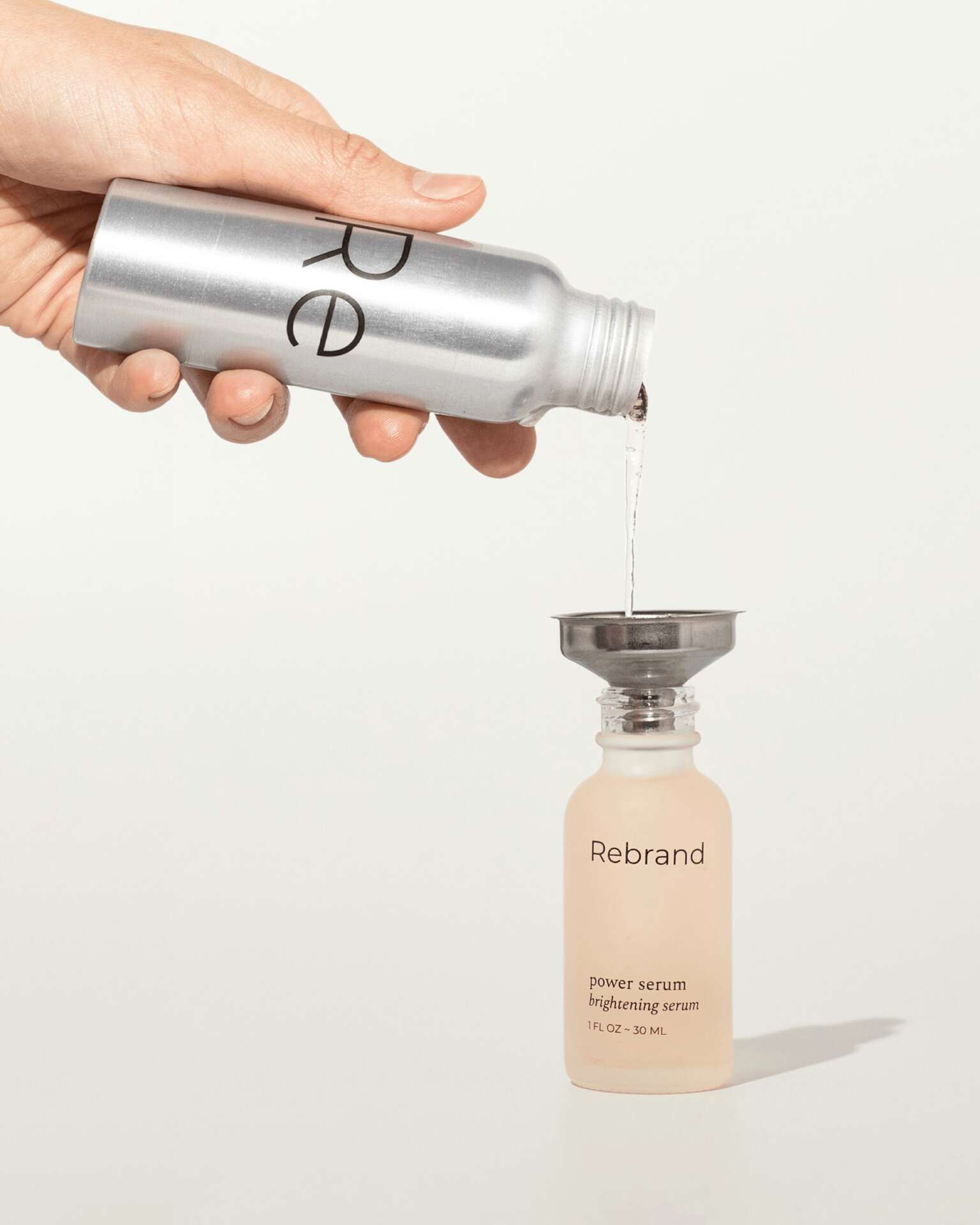We were lucky to catch up with Aubri Thompson recently and have shared our conversation below.
Aubri, thanks for taking the time to share your stories with us today One of the things we most admire about small businesses is their ability to diverge from the corporate/industry standard. Is there something that you or your brand do that differs from the industry standard? We’d love to hear about it as well as any stories you might have that illustrate how or why this difference matters.
Since our founding, Rebrand Skincare has been about disrupting the status quo of the beauty industry. Today’s beauty industry relies on overconsumption and single-use plastic packaging – two things we vow to fight against.
Trend cycles and beauty standards reinforce the idea that we need to buy more and more beauty products in order achieve the perfect skin or have the coolest new item. By keeping our product line minimal and avoiding marketing tactics that prop up beauty standards, we aim to reduce the number of products our customers buy.
Single-use plastic packaging is also a huge problem in the industry – over 120 billion units of plastic packaging are created for the beauty industry each year. By using glass, aluminum, and paper packaging with a novel refill system, we reduce the waste and emissions associated with conventional beauty products.

Great, appreciate you sharing that with us. Before we ask you to share more of your insights, can you take a moment to introduce yourself and how you got to where you are today to our readers.
My name is Aubri Thompson and I started my career as a cosmetic chemist in the beauty industry. I learned the importance of selecting ingredients with low hazards to humans and the environment. Wanting to take things one step further, I started Rebrand Skincare to address the overall picture of sustainability in the beauty industry. This meant creating a refill system to cut out single-use plastic packaging, and focusing on a minimal product line to fight overconsumption.
Rebrand Skincare is for people who want to do beauty differently. Even though we’re up against beauty standards and the linear economy, I believe that your skincare routine and your sustainable lifestyle don’t have to be at odds.

How did you put together the initial capital you needed to start your business?
Rebrand Skincare has been bootstrapped and profitable for our 4 years in business! It’s been kind of funny at times, but I knew that I wanted to maintain control of the business and grow slowly and steadily rather than feel the pressure to achieve unreasonable growth metrics.
I started the business in 2020 with $3,000. I produced all the products myself (fortunately as a chemist, I had a clear idea of how to formulate and scale the product), and hand labeled everything. I took the product photos and designed my own Shopify site. It definitely did not look the way I wanted it to – but I reassured myself that this was a good enough starting place and was able to gain customers from there. Reaching profitability wasn’t too hard, having only spent $3,000 to start!
As the business has grown, I’ve been able to reinvest a lot of the profits and bring the vision to life. We now have screenprinting packaging and gorgeous unit cartons, with professional product photos to match. I still do a lot myself to keep costs down, but I’ve been able to add consultants and contractors to the team.
There may come a point where I want to take investment, but growing slowly and not being on the hamster wheel of investors/bankers has been a huge blessing.

We’d really appreciate if you could talk to us about how you figured out the manufacturing process.
As mentioned above, I started the business with $3,000 and produced all the products myself. I had a background in R&D which was incredibly helpful as a built out a small lab to scale up. My first launch was with only 25 units of each product (teeny!!).
I always knew I wanted to transfer the formulas to a contract manufacturer, but at the start, I did not have any demand and didn’t want to order thousands of units with no customers and no marketing budget. Two years into business, I had enough demand to meet typical minimum order quantities (MOQs) and set out to find the right partner.
My advice with finding a manufacturer is this. Have a clear list of criteria that you want your manufacturer to meet (ie, experience with your type of product, low MOQs, location), and make sure to ask those questions at the start. Once you’ve narrowed it down to 2-3 potential manufacturers, send them your formula for a quote and go from there.
Our manufacturer has been such a great partner to us for many reasons. They allowed us to produce by volume of formula instead of number of units, which is very helpful as we have multiple sizes of each formula due to our refill system. They were also willing to accept reused sanitized containers so that we could offer closed loop packaging to our customers. And they are local, which is a huge plus for order pickup and production auditing.
Contact Info:
- Website: https://rebrandskincare.com
- Instagram: @rebrandskincare
- Linkedin: Rebrand Skincare
- Other: TikTok: @rebrandskincare


Image Credits
Valeria Iordan


